GSMArena tablet buyer's guide: November 2014
November 2014
Mid-sized tablets
Now that we covered the smallest tablets out there it’s time to move onto the bigger, more capable slates. The list retains many of the devices featured in our last buyer's guide but there are also some new faces.
The market has changed with new additions to the mid-sized tablet segment through the likes of the HTC-made Google Nexus 9 and the Apple iPad mini 3. The latter though has put the iPad mini 2 into a much better position than before, which is a rarity in the smartphone world.
Of course, all the tablets, which were around last time, have received pay cuts making them a much better buy than before. Currently, this is the most crowded tablet segment on the market.
We start you off with the Lenovo Yoga 8, which has been replaced in Lenovo's eyes but not in our buyer's guide. The Lenovo Yoga 8 has an 8-inch IPS display of 1280 x 800 resolution, a microSD card slot, 16GB or 32GB of storage, a 5MP shooter on the back, and a powerful 6,000mAh battery pack.
What's most appealing about the Lenovo Yoga 8 is the form factor. The tablet stands on a 3-stage kickstand (hence the name Yoga) allowing you to prop it up without any cases or accessories.
It lacks an LTE variant but has a 3G one - albeit a fairly limited one in frequencies (it supports only the 900/2100MHz networks). It is competitive in its pricing and is one of the best deals at the moment.
The newer Lenovo Yoga 8 2 has the same-sized display but of FullHD resolution and has a better chipset as well. But its price doesn't make it as competitive despite the interesting form factor.
 Lenovo Yoga 8 |
Pros | Cons |
|
|
|
The Asus Memo Pad 8 ME181CX isn't the obvious choice here because of its price - a little exaggerated at the moment. It does have some redeeming qualities though, including an adequate 8" IPS display of 800 x 1280px resolution, a 5MP camera, 16GB of onboard storage expandable via a microSD card, a quad-core Intel Atom Z3745 chipset, and stereo speakers.
It lacks 3G and LTE variants but has a GPS built right in.
 Asus Memo Pad 8 ME181CX |
Pros | Cons |
|
|
|
The Acer Iconia A1-840FHD is among the best you can find on this page. Its highlights include an 8" IPS LCD of 1200 x 1920px resolution, a quad-core Intel Atom Z3745, 2GB of RAM, 16GB or 32GB of storage and a microSD card slot.
Imaging is handled by either a 5MP camera on the back or the 2MP one on the front. The Acer Iconia Tab 8 A1-840FHD is using a skinned Android 4.4.2 KitKat but it is very close to stock Android. There's no official word on Android 5.0 Lollipop in the works however but that is subject to change.
There is no 3G or LTE option for the slate but that's about the only serious gripe you could have with a Full HD tablet that's priced less than €200.
|
Acer Iconia A1-840FHD |
Pros | Cons |
|
|
|
The Lenovo Tab S8 is quite the hardware package. The tablet has an 8" 1200 x 1920px IPS LCD on tap, stereo speakers, 8MP camera on the back, 1.6MP 720p-capable front-facing shooter, 16 gigs of storage expandable through the microSD card slot, a quad-core Intel Atom Z3745 chip, a GPS, the lot.
What's more impressive is the petite stature of the slate - it's very lightweight at just 299g and very thin at 7.9mm. The tablet comes in just under €200 but has an LTE-capable doppelganger for some 25% more.
We're not sure about how far reaching the Lenovo Tab S8 availability is, but if you can find it around, it looks like a better purchase over the Acer Iconia A1-840FHD.
 Lenovo Tab S8 |
Pros | Cons |
|
|
|
Speaking of slim and well-packaged next up is the Samsung Galaxy Tab Pro 8.4. It costs some 10% more than the Lenovo Tab S8 but adds 0.4" of display size and it’s much more generous in resolution – it’s got an 8.4" 1600 x 2560px display with an impressive 259 ppi.
The Samsung Galaxy Tab Pro 8.4 isn't all talk and no do - it packs just about everything you’d dream to see in a mid-sized tablet - stereo speakers, 8MP camera on the back plus a 2MP 1080p-capable one on the front, 16GB or 32GB of storage, both expandable through a microSD card slot, good battery life and an LTE-enabled versions as well.
The Samsung Galaxy Tab Pro 8.4 packs a potent Snapdragon 800 chipset as well.
The Samsung Galaxy Tab Pro 8.4 was featured in our last tablet buyer’s guide as well, but Samsung’s offer in this segment has since been augmented by the Samsung Galaxy Tab S 8.4. It has almost the same specs but features an AMOLED display (as opposed to the Super clear LCD of the Pro series) and a slimmer, lighter body. However the Tab S costs much more and its Wi-Fi only option comes with an Exynos 5 Octa 5420 chipset, which isn't as powerful as the Snapdragon 800 inside the Tab Pro.
We can't really say anything bad about the Samsung Galaxy Tab Pro 8.4 - it doesn't have an NFC chip and its built-in audio and video codecs have trouble with DivX and AC3 but that’s nitpicking.
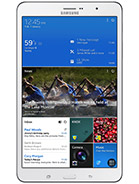 Samsung Galaxy Tab Pro 8.4 |
Pros | Cons |
|
|
|
| Review | ||
The Nvidia Shield made quite a bit of stir in the tablet world. Outside of its high-value brand, it turned heads thanks to its clean design, potent hardware package and stock Android build. It's built around an 8" 1920 x 1200 display, two 5MP cameras, front-facing stereo speakers, 16GB of storage and microSD card expansion.
The Nvidia tablet runs on the non-64-bit Tegra K1 chipset which is praised for great CPU performance and superb GPU performance. We found as much in our Xiaomi Mi Pad 7.9 review .
The Nvidia Shield also has access to the DirectStylus 2, which costs around $40 and works well with the drawing software the company provides on the slate.
Thanks to using an almost stock version of Android, the Nvidia Shield is already receiving Android 5.0 Lollipop.
Nvidia's Shield costs around the same as an Apple iPad mini 2 for the Wi-Fi only version and is a little cheaper for its LTE-capable one, making it quite a bargain as far as mid-sized slates go.
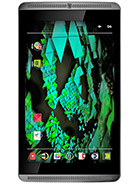 nVidia SHIELD |
Pros | Cons |
|
|
|
The Amazon Kindle Fire HDX 8.9 is the bigger high-end tablet in the Amazon lineup. It has the bigger display canvas to show for its higher price tag and also a higher resolution - 2560 x 1600px and 339 ppi. It packs the same chipset as the 7-incher and has the same 16/32/64GB choice with 2GB of RAM. The camera has a much higher resolution – there is an 8MP back-facing shooter and a front-facing 720p one. There are stereo speakers on the Kindle Fire HDX 8.9 as well.
The tablet uses the same Android-based Fire OS and it lacks the Google Play Store access, being tied to Amazon's ecosystem. This would probably keep off users who are used to relying on Google’s services.
While the Kindle Fire HDX 8.9 does offer an LTE variant, it is a little expensive at the moment.
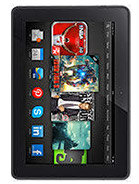 Amazon Kindle Fire HDX 8.9 |
Pros | Cons |
|
|
|
Now moving onto to the Apple iPad mini 2. It has been replaced by the Apple iPad mini 3 but that has done mini 2 more good than bad. The Apple iPad mini 3 is the same tablet but with a finger-scanning Touch ID home button and a golden color option. Since the iPad mini 3 arrived and assumed the price of its predecessor the latter is now €100/$100 cheaper and just as good.
The rest is the same excellent 64-bit A7 chipset, the immaculate app ecosystem and performance, and superb build quality. The highlight is a 7.9-inch 2048 x 1536px display, an all-metal build with stereo speakers, a 5 MP camera and a choice of either 16GB, 32GB, 64GB, and even 128GB storage. Keep in mind that Apple only sells the 16GB and 32GB models at the moment but the other two are still up for grabs from third party retailers.
If you want data connectivity you could opt for the LTE iPad mini 2 but it commands a higher price tag. But as with both iPad mini 2 models you have to get the storage option for you right from the get go as Apple doesn't offer expandable storage.
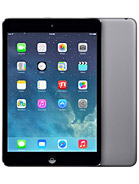 Apple iPad mini 2 |
Pros | Cons |
|
|
|
| Review | ||
Back at IFA 2014 Sony showcased its Xperia Z3 Tablet Compact proving it can go toe to toe with the best and even move it underwater to finish the job.
The display is only 8" (not 8.9" or 9" or 8.4") but packs a lot of punch thanks to its 1200 x 1920px resolution, and very high contrast and brightness (though viewing angles could have been better). It offers good contrast, a capable 8.1MP camera, stereo front-facing speakers and a handsome Snapdragon 801 chipset.
The Xperia Z3 Tablet Compact has another edge thanks to its 3GB of RAM promising great task management. It has only 16GB of storage but that can be expanded with a microSD card. The body is quite impressive thanks to its 6.4mm thin profile and 270g weight making its screen-to-body ratio superior to the two latest iPad minis.
The tablet’s elements resistance is rated at IP68, meaning it's dust tight and can resists water immersion of up to 1 meter for up to 30 minutes. The slate has Android 4.4.2 KitKat on tap but is slated to get Android 5.0 Lollipop soon.
The Sony Xperia Z3 Tablet compact offers an outstanding battery performance despite what its thin profile might suggest.
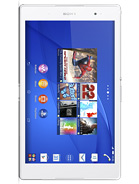 Sony Xperia Z3 Tablet Compact |
Pros | Cons |
|
|
|
| Review | ||
The biggest contender in our mid-sized category is the HTC Nexus 9. The name says it all - it has an 8.9" IPS LCD of the iPad-esque 4:3 aspect and 1536 x 2048 resolution.
This is Google's pureblood tablet meant to showcase the best of Android 5.0 Lollipop on a big screen. At its core the Nexus 9 utilizes the 64-bit variant of Nvidia's Tegra K1 chipset with a dual-core 2.3GHz processor and the Kepler DX1 GPU, which is only outperformed by the A8X chip inside the Apple iPad Air 2.
The HTC Nexus 9 has stereo speakers on the front, 16GB (Wi-Fi only) and 32GB (LTE) storage, 8MP camera and a 720p front-facing camera.
It's also priced the same as its direct competitor from Apple - the iPad mini 3 but the LTE-enabled Nexus 9 is quite steep in price.
We would've liked to see expandable storage but since this is a Nexus device we didn’t really expect it. That doesn’t stop us from wishing for more ample base storage.
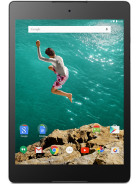 HTC Nexus 9 |
Pros | Cons |
|
|
|
| Review | ||
Reader comments
- Igor
- 27 Dec 2014
- 4f$
Can anyone explain to me why do I need a camera on the back of my tablet? Who takes pictures with a tablet?!! Do not we already have cellphones with cameras? Why does GSM Arena even mentions the "primary" camera specs? How is it prima...
- Anonymous
- 19 Dec 2014
- Lc}
At that point, though, why not buy a whole laptop and actually have a full PC? With all the addons the only major difference would be the weight, which I'd be ok with as a trade off for a full PC operating system.
- Nick
- 07 Dec 2014
- bxd
Galaxy Tab S 8.4 should have been in the list.. There are people that can afford good tablet eventhough the price is high.. How come Nexus 9 made the list despite of high price and no memory card slot.. Yeah, I know Nexus is direct product from...